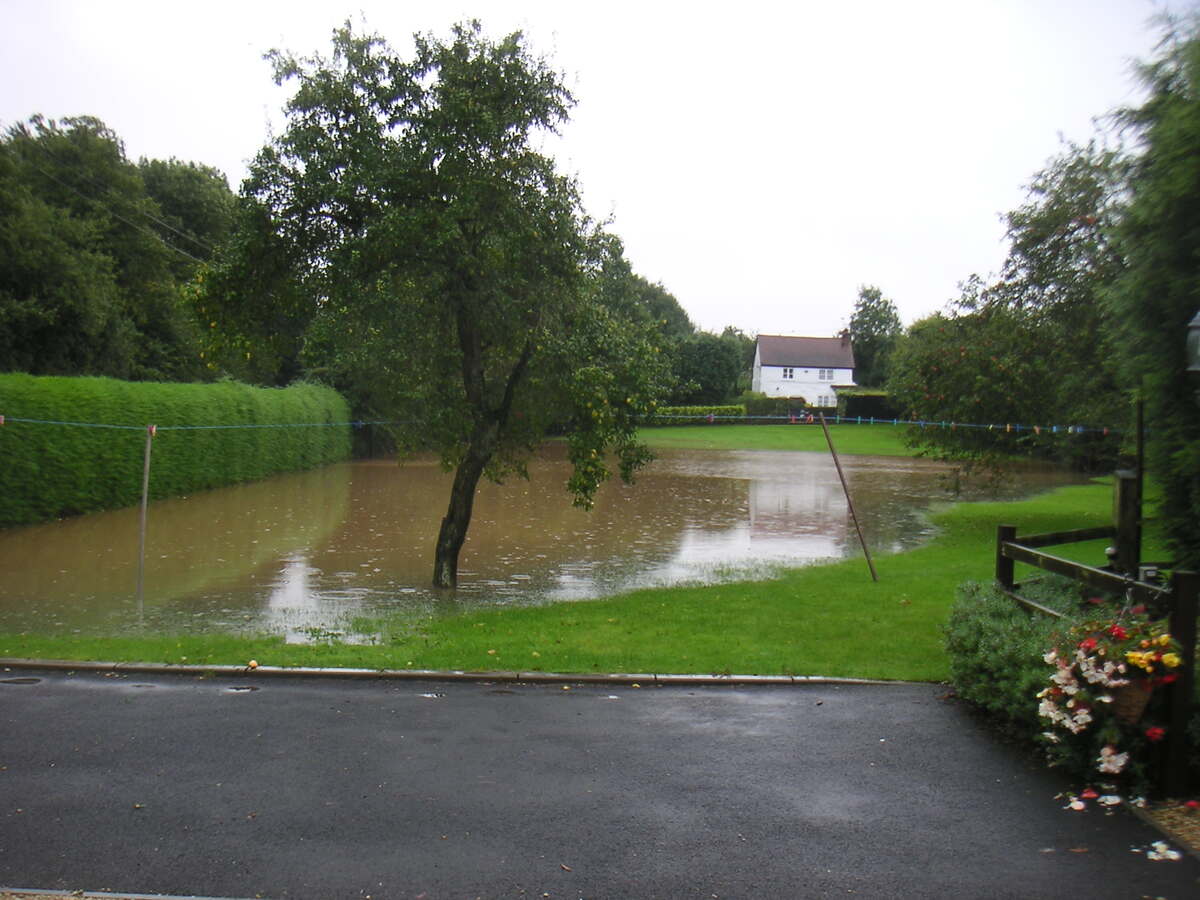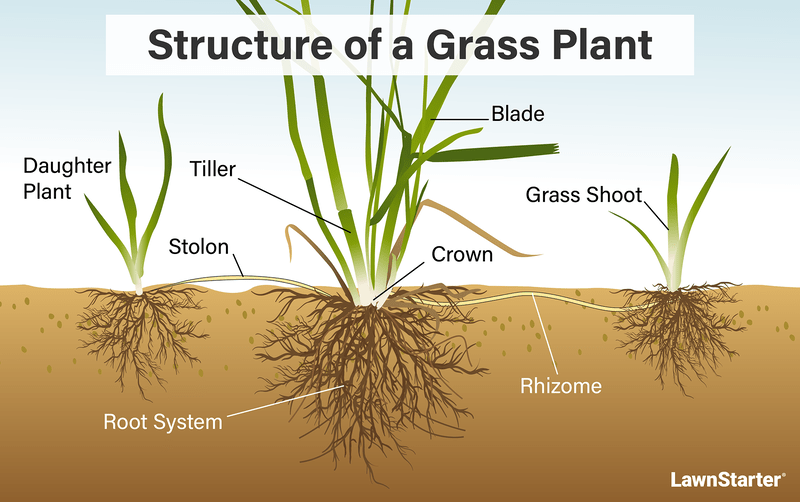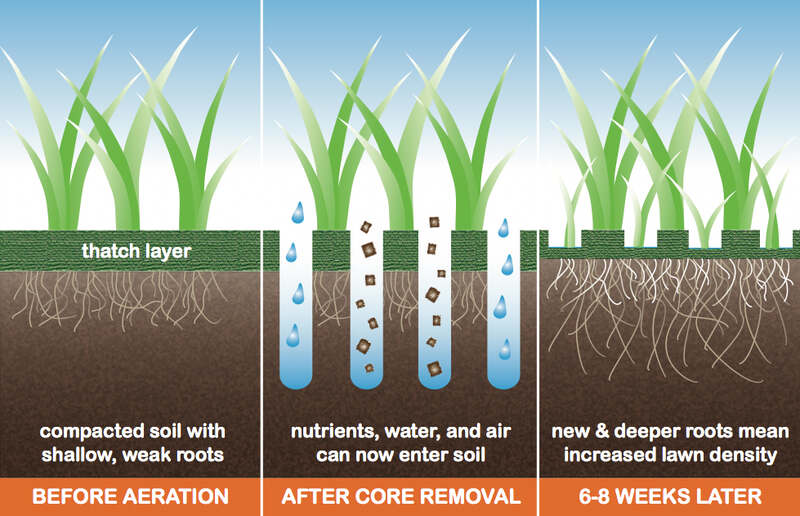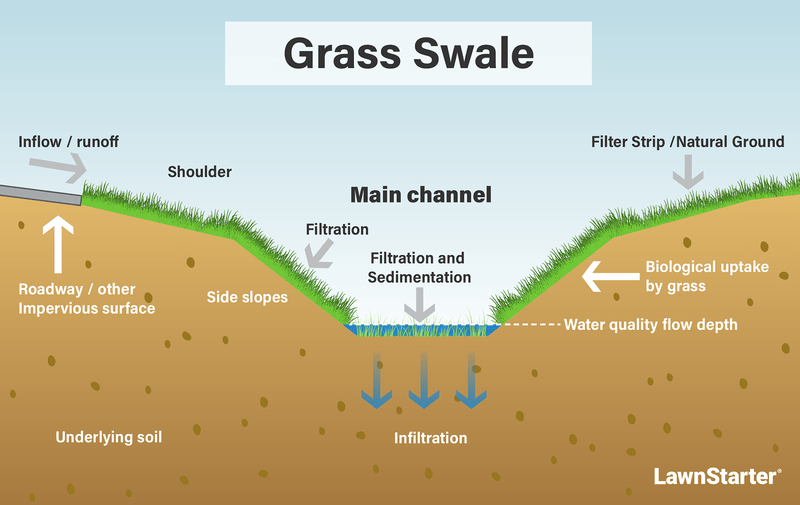
As floods become more common, so has the chore of recovering from their damage. Homeowners will want to know how to help lawns recover from flood damage.
- Flooded Lawns: The Levels of Damage
- How to Know if Your Lawn is Too Flood-Damaged
- What to do When the Flood Recedes
- Stabilizing Soil with a Temporary Lawn
- Best Watering Practices
- Do You Live in a Flood Zone?
- Flooding Is A Greater Concern Than Ever
- Preventative Lawn Maintenance: Simple Things
- Preventative Lawn Maintenance: Serious Actions
- When to Call a Professional
- FAQs
Flooded Lawns: The Levels of Damage
The degree of damage to your lawn will depend on:
- How long it was under water
- How deep it was under water
- Temperature of the water during the flooding. Warm temperatures (above 60 F) are as damaging as cold temperatures when it comes to water temperature.
- The lack of light while under water
- The lack of oxygen suffered during the flooding
- The type of grass that made up the lawn
- The condition of the lawn before the flooding
| Degree of damage | Type of damage | What To Do |
| Lightly silted lawns (1 inch or less) | Lawns submerged less than 4 days and covered with an inch or less of silt have a good chance to recover. | ● Hose off as much silt as possible. ● Apply fertilizer. ● Have the soil tested. ● Follow the soil test recommendations. |
| Heavily silted lawns (more than 1 inch) | Little chance of recovery. Some species of grass, such as fescue and ryegrass, will do better. | ● Remove as much silt as you can. ● Till thoroughly. ● Re-seed or re-sod. |
| Flooded lawns that have no silt | Most will survive 4 to 6 days under water. Bermudagrass, Zoysia and buffalograss do the best. | ● Act immediately (as soon as the water recedes). ● Aerate ● Fertilize |
| Topsoil washed away | Replace the topsoil down to 6 inches | ● Apply compost with the topsoil to make up for lost root structure. ● Re-seed or re-sod. |
Source: University of Missouri Extension
A warning: Flooding spreads turf diseases and weeds. You will want to stay on top of diseases to identify and treat them as they emerge.
A pro’s tip: Rakes made of steel teeth will damage the emerging lawn if applied too vigorously. A mechanical aerator with hollow tines is a good investment.
How to Know if Your Lawn is Too Flood-Damaged

- If the top of the grass is no longer green, replace it.
- Pull up some grass. If the crown is mushy and brown, not firm and white, the plant is dead.
What to do When the Flood Recedes
Step 1: Get the big stuff. Put on thick shoes and gloves and use them to remove debris: glass, nails, metal objects, etc. As part of the cleanup, remove leaves, sediment, or other materials that can smother grass.
Step 2: Remove soil and silt deposits. Don’t be tempted to just rake it in and use it as your lawn’s new topsoil. Silt and sand brought in by floods lack organic material and don’t help grass grow.
A pro’s tip: To be sure you wash away the silt and organic matter, use a jet of water from a hose-end sprayer. You want to be sure to get the silt off and a jet of water is less taxing on your arms and shoulders than a lot of shoveling.
Step 3: Aerate. Wait until you see new growth appearing and go over the entire lawn three or four times with a core aerator, then apply fertilizer. Level it with a rake (or perhaps a power rake) after you’ve aerated the lawn.

Step 4: Re-seed? Re-sod? After several weeks, take stock. If 60 percent or more of the turfgrass is recovering, then it is feasible to re-seed or re-sod the bare areas. However, less than that and you likely will be better off installing an entire new lawn.
- Whether you are re-seeding a full lawn or a part of a lawn, a LawnStarter review has found there are six steps to consider in planting grass seed.
- When it comes to re-sodding, there is a step-by-step review put together by LawnStarter as you install new sod.
Stabilizing Soil with a Temporary Lawn
If your yard was flooded but the forecast warns that more floods may follow, you will want to wait until the extreme weather is no longer a threat before major rebuilding of your lawn.
In the short term, once it emerges from submersion, you can:
- Stabilize the soil and reduce further erosion by planting a quick-growing grass, such as ryegrass, either annual ryegrass or perennial ryegrass.
- Let it germinate. Ryegrass is one of the quickest; it will start in a week.
- Let it be until you are ready to establish your permanent lawn, even if it is an extended period.
- Till the ryegrass into the soil to make way for your permanent lawn.
Best Watering Practices
Even though an area has just been subjected to flooding, it is important to keep freshly planted seed or sod moist while either it germinates or the roots start taking hold. Don’t keep the area sopping wet, though. Excess water hurts the seed and sod.
- Early morning is the best time to water. Water between 4 a.m. to 8 a.m. to give the grass time to absorb the water, sending it down into the roots and into the grass plants themselves. During mid-day, the water dries too quickly. In the evening, it lingers, leading to fungal diseases, a special concern after a flood.
- Don’t water too little or too much. You want to moisten the soil, not go too deeply. Try to apply about 1 inch of water. (You can measure by setting out cans, such as tuna fish containers, as part of a lawn sprinkler audit.) If your soil is sandy, reduce the amount of water by half.
- Walk along your lawn after watering. If you see pools of water, reduce the amount you are applying. Runoff carries away fertilizer and seed you want to remain in place. It also discourages the root growth that you want.
Do You Live in a Flood Zone?
The Federal Emergency Management Agency offers a Flood Zone Map lookup tool:
Flooding Is A Greater Concern Than Ever
Even if your home is in an area that historically has not been flooded, that may be changing.
- Climate change is a factor: “It is increasingly clear that climate change has detectably influenced several of the water-related variables that contribute to floods, such as rainfall and snowmelt,” according to the Intergovernmental Panel on Climate Change in its special report and its amendments.
- Floodplains are increasing: By the end of this century, the floodplains will grow by 45 percent, according to the Natural Resources Defense Council (NRDC), due to global warming and extreme weather conditions.
- Waterways are changing: There are larger floods of rivers and streams in the Northeast and Midwest of the U.S., the Environmental Protection Agency (EPA) reports. The EPA found there are fewer large floods in the West.
- Flooding is increasing: Floods have become more frequent across the Northeast, Pacific Northwest, and northern Great Plains, the EPA also reported. Floods have decreased in the Southwest and the Rockies.
Source: National Oceanic and Atmospheric Administration
Preventative Lawn Maintenance: Simple Things
If you live in an area where flooding is a concern, there are steps you can take to limit any damage:
- Limit shade. Sunlight will help the lawn dry and recover.
- Add plants. They will absorb water, and help limit the damage to the grass roots.
- Mulch. Place it around the lawn. Mulch absorbs water. If you expect a good deal of runoff, you can distribute a lot of mulch. All you need is the mulch, a rake, and gardening gloves.
- Use sandbags. If the forecast calls for heavy rain, you can place sandbags around the yard. You can even make them yourself; just put sand into trash bags.
Preventative Lawn Maintenance: Serious Actions
- Install drains. Channel drains and French drains will carry away water, including floodwater.
- Create a rain garden. Also known as a bioretention cell, a rain garden is much like a swale, but one with trees and shrubs selected for their ability to do well even in standing water. A LawnStarter study found the best plants to grow in a rain garden, which include swamp milkweed, marsh marigold, and blue flag iris.
- Add a swale. They have been used to manage stormwater along rural roadways for more than a century, and are making their way more and more into residential areas. They are a natural way to have flooding water drained away from the house and yard.

When to Call a Professional
You can address flooding in your yard, either before or after, as a do-it-yourself project. It will take a lot of time and effort, but it can be expected to bring the kind of satisfaction that makes such things worthwhile.
However, if you are not in position to put in that time, your body is not able to put in that effort, or if you want the design and options that come from experience, you can call in a landscaping professional.
The LawnStarter pricing guide found the national average cost for a landscaping project is $5 to $24 per square foot, with these individual costs:
| Service | Average Cost |
| Landscape design | $2,204 – $6,182 |
| Land grading | $100 – $3,400 |
| Mulching | $37 – $113 per cubic yard |
| Cost of sod | $0.87 to $1.76 per square foot |
| Seeding | $336 – $1,010 |
| Aeration | $65 – $239 |
| Fertilization | $48 – $190 |
| Installing a drainage system | $1,899 to $5,346 |
FAQs
You don’t want to wait to remove any standing water. When the flood recedes, if your lawn has areas of standing water or that show excessive moisture, sweep that water away.
When a lawn is flooded, oxygen will not reach the roots, nor will carbon dioxide be expelled. In addition, the roots will not be able to bring in the nutrients that the plant needs, resulting in dead grass. The roots will start to die.
Wait until the ground is dry, then mow regularly (weekly would likely be best). It will stimulate the growth of grass.
A pro’s tip: Set your mower to the tallest setting. For the first few months, let the grass grow higher than you normally would. It will help it establish roots.
A Call to Action
Nature will take away the floodwater, but you need to take action if you want a first-rate lawn. You shouldn’t wait for the flood to strike; you should become aware of your area and start taking preventative measures (or hire a landscaping pro to do the preventative work for you). While the flood is still receding, you should start making decisions, and then get to work.
Main Image Credit: Lee Haywood / Flickr / CC BY-SA 2.0